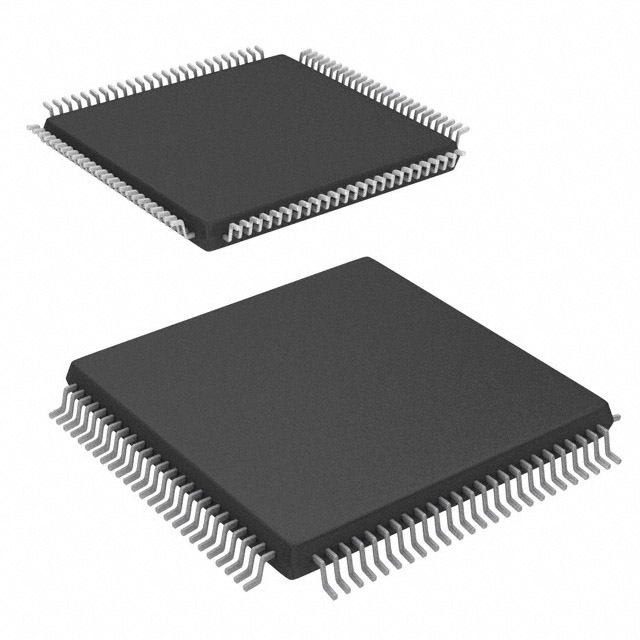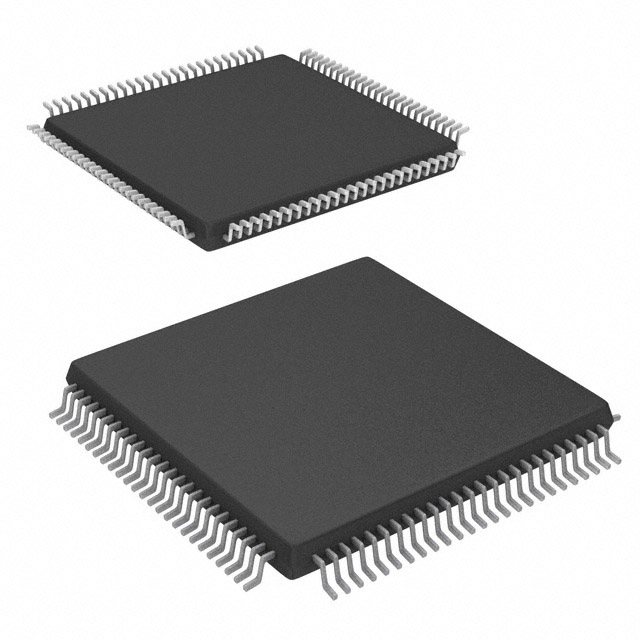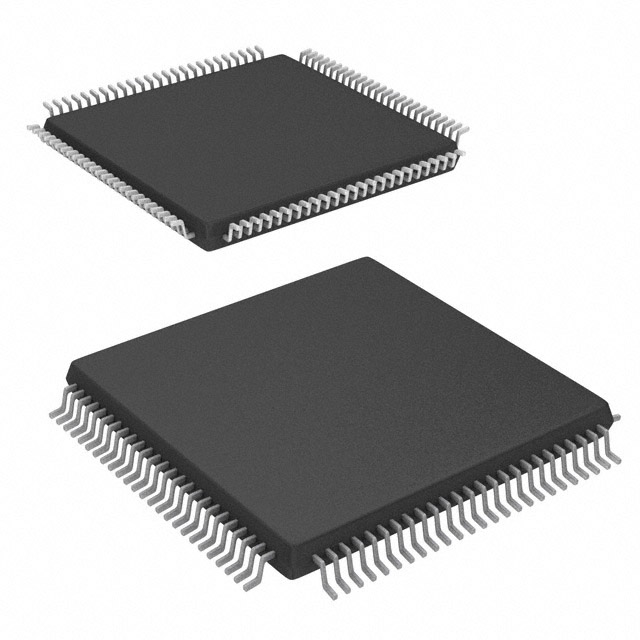Microcontroller: ATMEGA2560-16AU Introduction
ATmega2560-16AU is an 8-bit AVR microcontroller produced by Atmel (now Microchip), belonging to the ATmega series, commonly used in high-performance, low-power embedded applications. It is a specific package version of ATmega2560, with 256 KB flash memory, 8 KB SRAM and 4 KB EEPROM, suitable for applications requiring large storage capacity.
ATMEGA2560-16AU Main features
Processor core: Based on AVR 8-bit RISC architecture, it provides efficient execution speed and is suitable for a variety of embedded control systems.
Flash: 256 KB, supports program storage.
SRAM: 8 KB, used for data storage.
EEPROM: 4 KB, used for non-volatile data storage.
I/O pins: 86 I/O pins, providing a variety of interface functions.
Timer/Counter: 5 8-bit and 16-bit timer/counters for PWM signal generation, timing and other functions.
Serial Communication:
4 Serial Peripheral Interfaces (SPI)
1 UART
1 I2C (TWI)
ADC (Analog-to-Digital Converter): 16-channel, 10-bit resolution ADC, suitable for processing analog signals.
PWM: Supports up to 15 PWM outputs.
Operating Voltage: 1.8V to 5.5V, suitable for a wide range of operating environments.
Operating Temperature Range: -40°C to 85°C.
Package Type: 100-lead TQFP package (ATMEGA2560-16AU), suitable for surface mount (SMT) applications.
ATMEGA2560-16AU Typical Applications
Embedded control systems, such as automation equipment, robots, sensor data acquisition systems, etc.
High-speed data processing and complex task processing, especially suitable for applications with large storage and multiple communication interface requirements.
Performance Advantages:
The AVR architecture can provide high instruction throughput, suitable for high-performance control applications.
Large-capacity flash and SRAM support more complex software and data processing tasks.
Multiple communication interfaces and rich I/O pins enable ATmega2560 to connect to multiple peripherals and handle complex tasks.
Additional features:
Support for external interrupts and program interrupts, allowing real-time control in a multi-tasking environment.
Built-in Watchdog timer to enhance system reliability and stability.
ATMEGA2560-16AU Similar Comparison
ATMEGA2560-16AU vs ATMEGA1280V-8AU vs ATMEGA640-16AU vs ATMEGA640V-8AU
| Feature | ATMEGA2560-16AU | ATMEGA1280V-8AU | ATMEGA640-16AU | ATMEGA640V-8AU |
|---|---|---|---|---|
| Image |  |  |  |  |
| Manufacturer | Microchip Technology | Microchip Technology | Microchip Technology | Microchip Technology |
| Flash Memory | 256 KB | 128 KB | 64 KB | 64 KB |
| RAM | 8 KB | 8 KB | 8 KB | 8 KB |
| EEPROM | 4 KB | 4 KB | 4 KB | 4 KB |
| I/O Pins | 86 | 54 | 64 | 64 |
| Timers | 5 (8-bit & 16-bit) | 4 (8-bit & 16-bit) | 5 (8-bit & 16-bit) | 5 (8-bit & 16-bit) |
| ADC Channels | 16 | 16 | 8 | 8 |
| PWM Channels | 15 | 6 | 12 | 12 |
| Max Clock Speed | 16 MHz | 16 MHz | 16 MHz | 16 MHz |
| Working Voltage | 1.8V - 5.5V | 1.8V - 5.5V | 1.8V - 5.5V | 1.8V - 5.5V |
| Package Type | 100-TQFP | 100-TQFP | 100-TQFP | 100-TQFP |
| Main Application | Complex embedded systems | Moderate I/O systems | High-performance systems | High-performance systems |
ATMEGA2560-16AU Datasheet
ATMEGA2560-16AU FAQs
1. What is the main advantage of using the ATmega2560-16AU?
The ATmega2560-16AU offers large flash memory (256 KB) and high I/O pin count (86 pins), making it ideal for complex embedded systems requiring multiple peripherals, communication protocols, and large programs. It’s commonly used in applications like industrial control systems, robotics, and multi-sensor systems.
2. What is the clock speed of the ATmega2560-16AU?
The ATmega2560-16AU operates with a maximum clock speed of 16 MHz. This is typical for AVR-based microcontrollers and provides sufficient processing speed for many embedded applications.
3. What is the input voltage range for the ATmega2560-16AU?
The ATmega2560-16AU operates in the range of 1.8V to 5.5V. This wide voltage range allows it to be used in low-power applications while still being compatible with standard 5V systems.
4. How many I/O pins does the ATmega2560-16AU have?
The ATmega2560-16AU has 86 I/O pins, which is a high number, making it suitable for applications requiring many peripherals, sensors, or communication interfaces.
5. What are the communication interfaces available on the ATmega2560-16AU?
The ATmega2560-16AU supports multiple communication protocols:
6. How much SRAM and EEPROM does the ATmega2560-16AU have?
SRAM: 8 KB for data storage.
EEPROM: 4 KB for non-volatile data storage.
7. What is the role of the ADC on the ATmega2560-16AU?
The ATmega2560-16AU includes a 10-bit ADC with 16 channels for analog-to-digital conversion, which is useful for processing sensor data (e.g., temperature, humidity, or light sensors).
8. Can I use the ATmega2560-16AU for power-sensitive applications?
The ATmega2560-16AU is relatively power-efficient, with multiple low-power modes like sleep modes. However, for very low-power applications (e.g., battery-powered devices), a microcontroller with a lower power consumption, such as one from the ATtiny series, might be more suitable.
9. What are the key peripherals available in the ATmega2560-16AU?
Key peripherals include:
10. Can I use the ATmega2560-16AU for motor control?
Yes, the ATmega2560-16AU is well-suited for motor control applications. It has multiple PWM channels (up to 15) that can be used to control motor speed and direction. Additionally, its high I/O pin count allows for controlling motor drivers and other peripherals in motor control systems.
11. What is the maximum program size I can load onto the ATmega2560-16AU?
The ATmega2560-16AU has 256 KB of flash memory, allowing for relatively large programs compared to smaller AVR microcontrollers. This is suitable for more complex applications with large firmware or libraries.
12. What development tools can be used to program the ATmega2560-16AU?
You can use Atmel Studio (now part of Microchip Studio), which is the official IDE for Atmel/AVR microcontrollers. Alternatively, you can use the Arduino IDE for easier development, as the ATmega2560 is supported by the Arduino Mega 2560 board.
13. How do I program the ATmega2560-16AU?
The ATmega2560-16AU can be programmed via ISP (In-System Programming) using a compatible JTAG or USB programmer. The ATmega2560 also supports Bootloaders, which means you can load your program over a serial connection using the Arduino bootloader or a custom bootloader.
14. What are the power consumption characteristics of the ATmega2560-16AU?
The ATmega2560-16AU is designed to be relatively power-efficient, but the actual power consumption depends on the clock speed, peripherals in use, and operating mode. In sleep mode, the device can draw very little current, making it suitable for battery-powered applications with careful power management.
15. Can the ATmega2560-16AU be used in automotive applications?
Yes, the ATmega2560-16AU can be used in automotive or industrial environments due to its CAN bus support, wide operating voltage range, and robustness. However, ensure that the operating temperature and other environmental conditions are within the specified range for automotive-grade applications.
Microchip
在庫 : 13200






